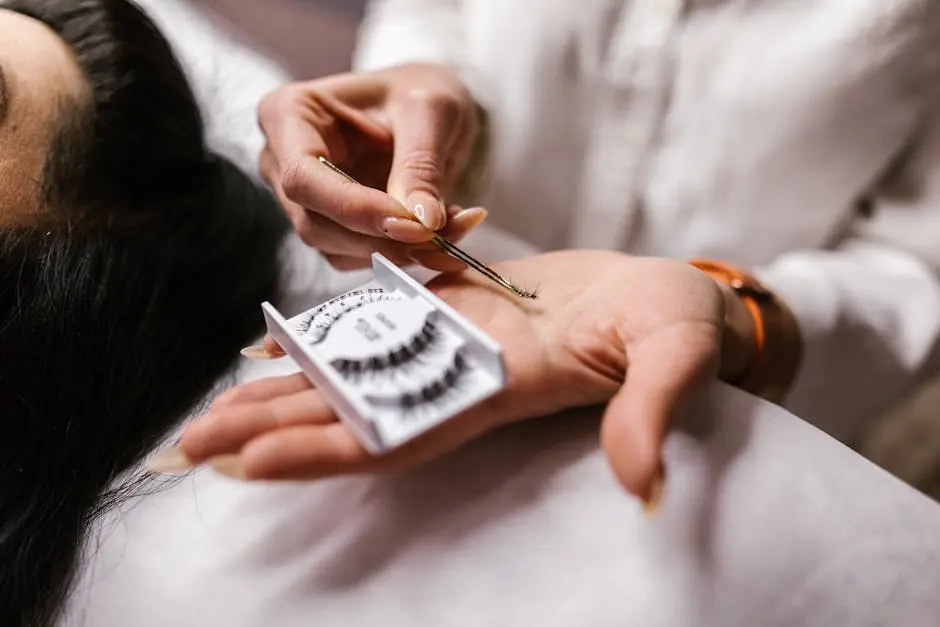Lash mapping is an essential skill for beauty professionals looking to enhance their lash extension techniques. This guide will take you through the fundamentals of lash mapping, providing tips and insights to help you elevate your beauty skills. Whether you’re just starting out or looking to refine your expertise, understanding lash mapping can transform your approach to lash artistry.
What is Lash Mapping?
Lash mapping is the process of designing individual lash extensions based on the unique features of a client’s eyes and desired look. It involves planning the length, curl, and thickness of each lash to create a harmonious and flattering appearance.
By understanding the basics of lash mapping, artists can provide a tailored experience that suits each client’s needs. Not only is it about measuring, but it’s also about creativity—envisioning a look that enhances natural beauty while aligning with client preferences.
Additionally, lash mapping serves as a communication tool between the artist and the client. When clients can visualize their lash goals on paper, it fosters trust and helps clarify expectations. This foundational understanding sets the stage for a successful application process.
The Importance of Lash Mapping in Client Consultations
During client consultations, lash mapping is pivotal. It allows artists to discuss preferences and expectations, ensuring satisfaction with the final outcome. A well-structured map helps streamline the application process and guarantees desired results.
Consultations are an opportunity to connect with clients on a personal level. By bringing in the concept of lash mapping, artists can use visual aids to simplify complex ideas. This fosters a sense of collaboration, making clients feel more involved in their beauty journey.
Moreover, addressing fundamental elements like eye shape and lifestyle during consultations can profoundly influence lash mapping. For instance, someone who leads an active lifestyle may prefer a more natural look, while another might desire dramatic, full lashes for special events. Tailoring the discussion around these insights lays the groundwork for a successful lash mapping session.
Essential Tools for Lash Mapping
To effectively create lash maps, artists need specific tools. This includes mapping stickers, measuring tools, and a clear understanding of various lash styles and effects. Each tool plays a role in visualizing the desired look before application.
Among the essential tools, mapping stickers are invaluable for marking lash lengths directly on the client’s eyelids. This not only aids in accurate placement but also allows for quick adjustments during the application process. Furthermore, a good pair of tweezers helps manipulate the lashes easily while maintaining precision.
Staying informed about different lash materials and styles is equally crucial. By experimenting with synthetic vs. mink lashes, for instance, artists can learn how each material behaves, allowing for perfectly mapped creations tailored to various eye types.
Step-by-Step Guide to Lash Mapping
This section will break down the process of lash mapping into simple steps. From analyzing eye shape and size to determining the right lengths and curls, you’ll learn how to create a customized map for every client.
First, begin by assessing the client’s natural lashes and eye shape. Every client is unique, and understanding their features is vital for effective lash mapping. Next, discuss with them what look they desire—natural, glamorous, or something in between?
Once you have a clear vision, pick lash extensions that suit their style. Mapping out a range of lengths on a diagram or directly on their eyelids will make it easier to visualize the final product. Finally, remember to document your mappings—this not only helps in repeat appointments but also streamlines your workflow.
Common Mistakes in Lash Mapping and How to Avoid Them
Even skilled artists can make mistakes in lash mapping. Here, we’ll highlight common pitfalls, such as overlooking client preferences or mismatching lash styles with eye shapes, along with tips on how to steer clear of these errors.
One major mistake is not taking client feedback seriously. Sometimes, clients may have a particular style in mind that differs from current trends. Engaging them in the mapping process ensures their vision is respected, leading to a happier experience.
Another common error is ignoring eye symmetry. It’s crucial to note any asymmetries and adapt the lash layout accordingly to ensure balance. This attention to detail is often what sets apart an average lash job from an exceptional one.
Exploring Different Lash Styles Through Mapping
Lash mapping opens the door to a variety of lash styles. This section will discuss how to experiment with classic, volume, and hybrid lashes, outlining how mapping can help achieve each style effectively.
Classic lashes are about enhancing what you already have. A lash map for classic styles should focus on adding length, while keeping in mind the natural lash density. Volume lashes, on the other hand, require a different approach, as they involve placing multiple, lighter lashes on a single natural lash, providing depth and drama.
Lastly, hybrid lashes combine the best of both worlds. Mapping them successfully involves blending classic and volume techniques to create a customizable style suited to individual preferences. By continually experimenting with these styles during the mapping process, artists can push their creative boundaries and offer clients unique looks.
Embrace the Art of Lash Mapping
Mastering lash mapping not only elevates your skills but also enhances the overall experience for your clients. Embrace the art of lash mapping, and you’ll see your confidence and creativity flourish. Happy mapping!


